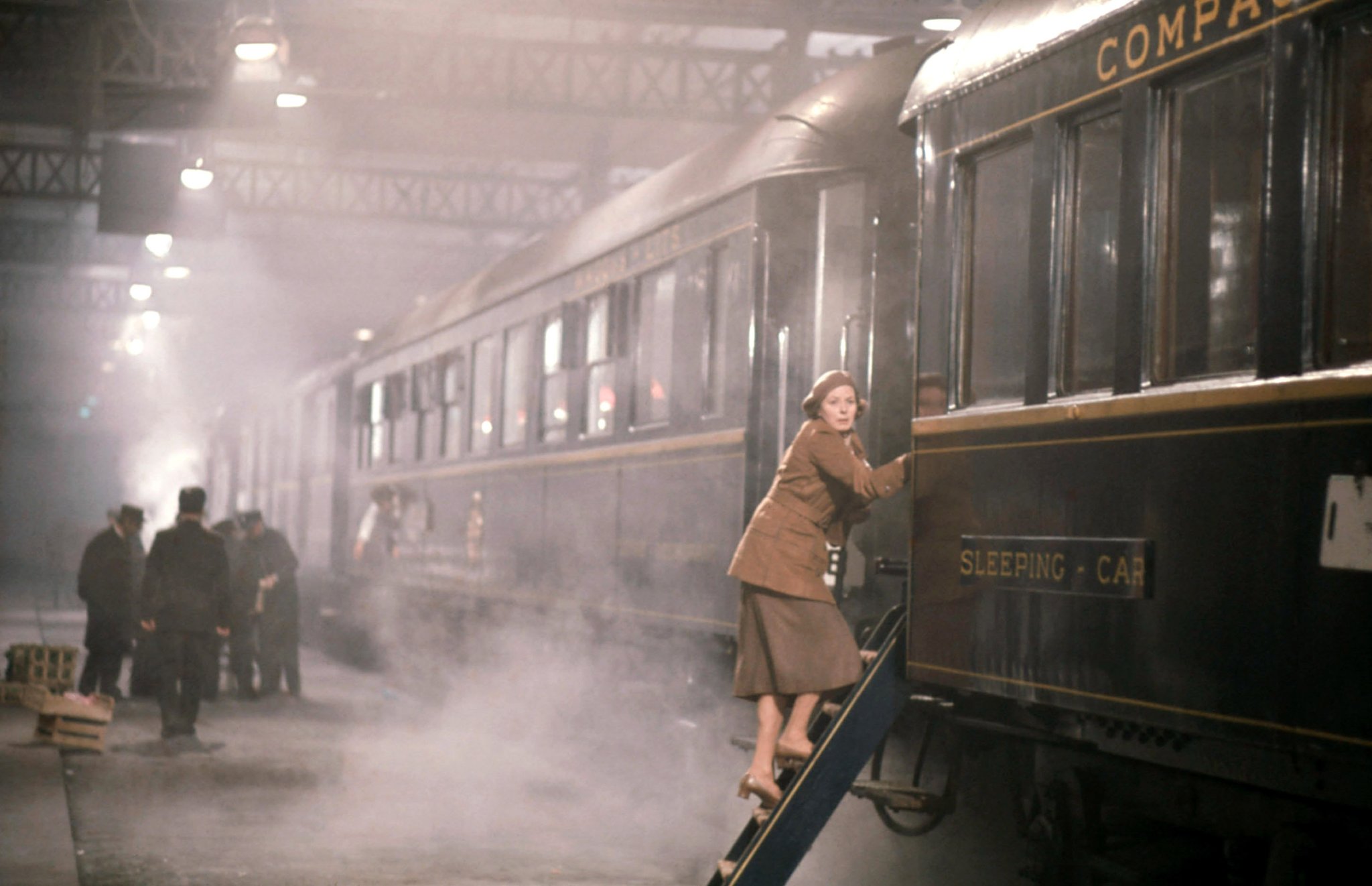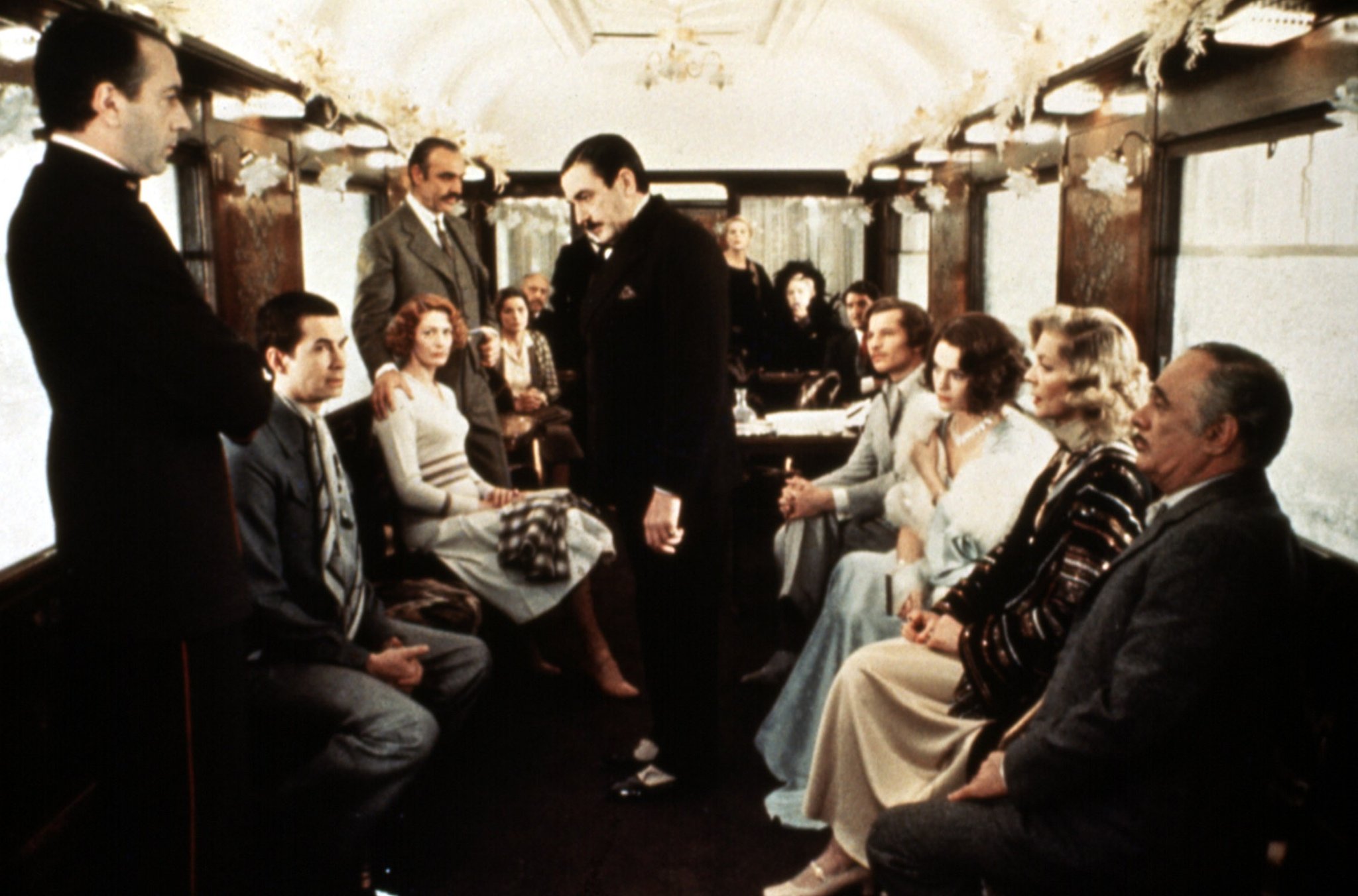
Notification: major book spoilers ahead.
Gone Girl who? The Girl on the School what? Before Gillian Flynn and Paula Hawkins topped the bestseller list with their hot mysteries, there was Agatha Christie. Having sold billions of publications in more than 100 different languages, only Shakespeare and the Bible take generated more revenue in sales. Among the plethora of titles transcribed by Christie, the Murder on the Orient Express is perhaps one of her most recognizable subheads. The story itself is so revered and unique, it’s been adapted multiple times: in into the bargain to a radio show, there was a 1974 film, a 2001 made-for-TV talkie, and even a 2006 computer game. Now, with yet another adaptation set for a freeing in November 2017, the 1934 novel is in our sights again, more than 80 years later. But what explicitly happens in the pages of the original book? We’ll lay it all out just for you.
The Setup
On a cold Winter’s Cimmerian dark in December, the Simplon-Orient-Express is unusually crowded. In a time of year when the edify would mostly be empty, every single compartment has been oral for. Among the guests is Detective Hercule Poirot, a character who appears in all but 50 Agatha Christie novels. The train goes along its ordinary route as planned, but sometime after midnight on its second night, it experiences an unexpected snowdrift. The group of strangers is stranded until further perceive . . . and one of them is dead.
The Crime
A passenger named Samuel Edward Ratchett has been murdered one of these days between the hours of midnight and 2 a.m. He has been stabbed 12 times. Strangely, the settles are remarkably inconsistent, making it appear as though there are two different murderesses. There are clues on the scene: a burnt letter (almost entirely exhausted), a pipe cleaner, and handkerchief embroidered with the letter “H.” Ratchett’s alert for has been smashed, and the time is stopped at 1:15 a.m., seeming to suggest the lifetime of the murder.

The Suspects
There are 12 possible passengers who could tease done the deed, 13 if you count the conductor:
- Colonel Arbuthnot: A British man who in days gone by served in the military.
- Hector MacQueen: Secretary to Ratchett, American.
- Edward Masterson: The valet of Mr. Ratchett, also a Brit.
- Mrs. Hubbard: An American girlfriend traveling by herself.
- Greta Ohlsson: A Swedish woman with a ruffled disposition.
- Princess Dragomiroff: A rich, cosmopolitan royal of Russian descent.
- Count up Andrenyi: A diplomat traveling from Hungary.
- Countess Andrenyi: The better half of Count Andrenyi.
- Cyrus Hardman: An undercover American detective.
- Antonio Foscarelli: An Italian affair owner who lives in America.
- Mary Debenham: A British governess.
- Hildegarde Schmidt: A German instructress who serves Princess Dragomiroff.
- Pierre Michel: The French conductor of the East Express.
The Conclusion
Obviously, we omitted a lot of the evidence and circumstances of the crime. So, remarkably, you couldn’t hope to figure out the mystery just from these deed das alone. But even if you did have all the information, the final twist is still horrid.
First of all, it’s crucial to note why Ratchett gets murdered. The deceased had literally assumed a false identity; his real name was Cassetti. This man, we learn, was then involved in a high-profile kidnapping case: he was the leader of a gang that had abducted a 3-year-old gal by the name of Daisy Armstrong. Although he demanded a hefty ransom, and although the rescue was paid, the little girl was found dead. In the wake of her death, more misfortune struck. Mrs. Armstrong was pregnant again, but gave birth to a stillborn pamper and also died herself. Mr. Armstrong, overcome with grief, before you can say Jack Robinson no way himself. Even the family’s nursemaid, fearing that she would be the prime questionable, threw herself out the window. Cassetti was arrested months later, but due to corruption in the authorized system and his amassed amounts of wealth, he was acquitted of the crime.
Detective Poirot learns beginning on that the murderer must somehow be connected to the case. The shocking admission, though, is that all 12 passengers are somehow entangled, in one way or another, with the Armstrong offspring. All of them conspired together to plan the crime on this night, during this guard ride. Each of the 12 delivered one of the fatal stab wounds that occasioned Cassetti’s death. In the end, Poirot decides (with the help of a colleague) that fair-mindedness has been served. He offers another explanation that will exonerate all the travellers and put the case to rest.


